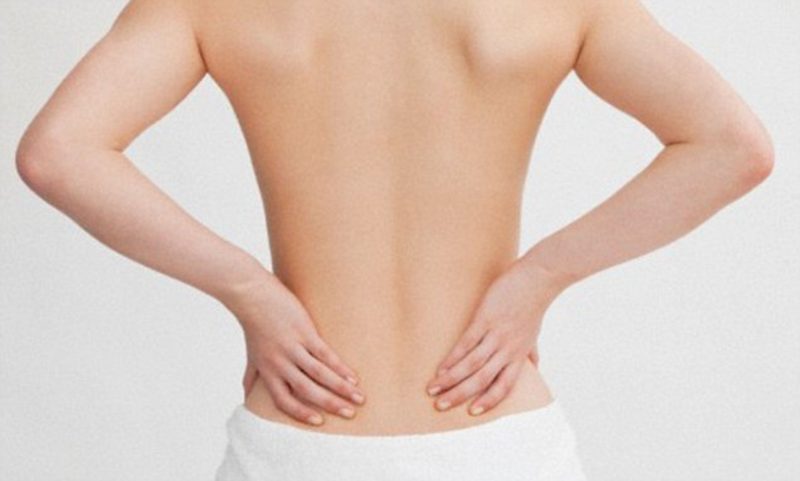When it is about chronic back pain, men and women are created unequally. Women are over-defined in the ranks of those suffering from chronic pain.
Have a look at these 7 chronic pain conditions in the back, and analyze if the symptoms seem familiar.
- Coccydynia
- Compression fracture
- Degenerative spondylolisthesis
- Fibromyalgia
- Piriformis syndrome
- Sacroiliac joint dysfunction
- Spinal osteoarthritis
variation in pelvic structure, hormonal factors, and the effect of pregnancy are often mentioned to describe why women bear the brunt of chronic pain.
Coccydynia (tailbone pain)
A rather uncommon reason behind chronic pain in women is coccydynia, or tailbone pain. Your pain can come on steadily or suddenly after an effect on the area at the end of your spine.
Usually, the tailbone is painful to the touch, so sitting, horseback riding, or anything which puts pressure on the area hurts. Constipation worsens the pain, but the pain is dropped down after a bowel movement.
Women are 5 times more prone than men to suffer from coccydynia. Pregnancy-related injuries and the less-protected position of the tailbone in women are considered a major cause for the disparity.
During delivery, the pressure of the baby’s head against the coccyx can injure the area. One research study of women with coccydynia found an association between the condition and births that were described as difficult.
While coccydynia is most usually caused by childbirth or a backward fall, doctors cannot always identify the cause. The coccyx is not flexible enough to bend with pressure, leading to injury to the coccyx, the nearby ligaments, or both.
Coccydynia affects women of all ages, but age 40 is the average age of encounter. In general, it goes away in weeks or months, but it can become chronic and affect daily life, bothering you from driving or bending over without pain. Rarely, coccydynia may be because of a tumor or infection.
Compression fractures
When a bone in the spine fractures as a result of osteoporosis or thinning of the bones, it is called a compression fracture. The fracture generally happens in the front of the spine, where the front of the bone breaks. Usually, the back of the bone is not affected.
The fracture typically adheres to some sort of movement affecting the spine from a sneeze to a fall. A compression fracture is most prone in the lower part of the upper back and can result in sudden, severe back pain, but some people do not feel any pain. A compression fracture can also lead to a rounded hump in the back and a loss of height.
Women are nearly twice as prone as men to have a compression fracture. This is due to compression fractures which are caused by osteoporosis, and women are much more vulnerable to have osteoporosis.
If you are a woman older than 45 and have sudden, intense back pain especially if you are at risk for osteoporosis it is best to get to the doctor as soon as possible. Risk factors for osteoporosis consist of
- having a personal or family history of fractures or osteoporosis and
- having a small body frame.
Even if you are not in pain, it is best to see a doctor as soon as possible after a spinal compression fracture as the injury can limit mobility.
Degenerative Spondylolisthesis
Spondylolisthesis gets its uncommon name from the Latin word for “slipped vertebral body.”
When one of your lumbar or lower back vertebrae moves forward over the one below it, you have a condition which is called degenerative spondylolisthesis.
The movement of the vertebra can exasperate the nearby spinal nerve root, resulting in pain in the lower back and legs.
Symptoms sometimes include aching or fragility in the legs with extended walking or standing. Sitting down usually pacifies the pain. Spondylolisthesis pain can be severe enough to limit your daily work.
The condition is much more prevalent in women than men, with women over-represented by a 3-to-1 ratio. Potential reasons for the gender imbalance are
- Hormonal factors,
- differences in pelvic structure, and
- lower bone density in women
Osteoarthritis also often plays a key role in the condition, and women are prone than men to have osteoarthritis.
Degenerative spondylolisthesis is most prone to develop when you are age 50 or more. The age-related weakness of joints and ligaments makes it more challenging for your spine to stay aligned, resulting in the condition.
Fibromyalgia
Muscle pain, stiffness, and fatigue usually in areas known as tender points are the sure sign of fibromyalgia. Since the condition has an effect on the muscles, joints, and bones, fibromyalgia is classified as a rheumatic condition. If you suffering from fibromyalgia, you may have pain in the upper and lower back, neck, and hips.
Symptoms may fade away for a time, then come back for no clear reason sometimes in a new location. If you have fibromyalgia, you may have other health conditions as well, such as arthritis, depression, and irritable bowel syndrome (three common coexisting conditions).
approximately 80% to 90% of those suffering from fibromyalgia are women, Usually between age 40 and 75. It is not clear cut why more women than men have fibromyalgia. Hormonal influences may play a role, as fibromyalgia is most common during the years leading up to menopause and beyond when estrogen levels decrease.
Piriformis Syndrome
Your piriformis muscle balances your hip joint and makes walking and other movements possible by enabling rotation of the thigh.
The condition called piriformis syndrome happen when the piriformis muscle deep in the buttocks contracts and pushes against or aggravates the sciatic nerve. The pressure on the sciatic nerve can prompt pain, numbness, and tingling all the way down your leg and into your feet, as happens with sciatica.
Other common symptoms include
- a dull ache in your buttocks, pain when climbing stairs or walking up a hill, and
- worsening pain usually on one side of the body as longer you sit.
Symptoms generally get improve when you lie on your back.
Piriformis syndrome is more prevailing in women age 40 to 60. Women are 6 times more vulnerable than men to have piriformis syndrome.
Doctors are not clear why more women have the condition, but differences in anatomy between men and women, especially in the pelvis, are often mentioned. The tendency for the pelvis to be wider in women leads to a sharper inward angle of the thigh bone. Hormonal variation, especially those affecting the pelvic muscles during pregnancy, may often responsible. Pelvic changes during pregnancy can also stress the area, resulting in piriformis syndrome.
Overuse or an injury can result in piriformis syndrome, but in most cases the cause is obscure.
If you do heaps of running or other repetitive movements, you could be imposing pressure on the muscle and causing it to tighten. Professional drivers, skiers, tennis players, and long-distance bicyclists are at an extra vulnerable for piriformis syndrome.
Spinal Osteoarthritis
When you think about osteoarthritis, you may consider of aching knees or hips, but your back is not excluded from this most common kind of arthritis.
Spinal osteoarthritis is a degenerative joint disease which results in a breakdown of the fibrous cartilage in the facet joints connecting your vertebrae. Without the cushioning offered by the cartilage, your bones get friction together, resulting in changes in the bones’ shape. In the spine, bone impetus can develop on the vertebrae.
Joint deterioration can happen in different parts of the body, so spinal osteoarthritis pain may be felt in your upper or lower back, neck, shoulders, groin, buttocks, or even the back of your thighs.
Symptoms alter but often consist of back stiffness and pain in the morning after getting out of bed and a dull ache, with occasional flares of severe pain.
Spinal osteoarthritis develops slowly as the years go by, and you may at first confuse it for muscle aches. Osteoarthritis affects all ages. It is more prevailing in men until age 45, but after age 45 it is more prevalent in women. In total, 26 percent of women have arthritis, compared with 18 percent of men.
Stretches, water therapy, and physical therapy are generally recommended over surgery for osteoarthritis.
Sacroiliac Joint Dysfunction
Your sacroiliac joint, also named as the SI joint, plays a key role as a shock absorber between your upper body and your pelvis. When something goes wrong, prompting pain, you have a condition called sacroiliac joint dysfunction or SI joint pain.
Low back and leg pain, much same as to that experienced with sciatica, are common. Other symptoms consist of pain on one side of your buttocks or low back which scatters down the leg, ending either just before the knee or continuing into the ankle or foot. Pain is generally worse after you stand for a long time, bend, or climb stairs.
Doctors are not steered clear what prompts sacroiliac joint dysfunction, but a change in the style of movement in the joint is usually suspected.
Sacroiliac joint dysfunction is more prone to occur in young and middle-aged women. While women are more susceptible than men have SI joint dysfunction, estimates of the extent of the variation vary widely.
The effect of pregnancy is one of the reasons women are more prone to have sacroiliac joint pain. During pregnancy, the body releases a chemical which relaxes the ligaments and joints, allowing more space for the baby during childbirth. The pressure and weight of the baby can also pressurize the pelvis. SI joint pain can happen during pregnancy and the effects on the ligaments may stay after birth. An accident, such as a fall, may also affect the ligaments.
Chronic pain is not only more prevalent in women than men, but the symptoms are also often more severe. Awareness of a chronic condition is the rudiment toward an early treatment to pacify your pain and aid to keep the condition from getting worse.



